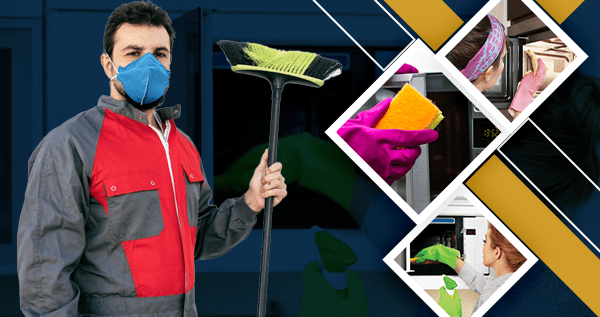1. Understanding the Nature of Marble
Marble is a natural stone composed mainly of recrystallized calcite and other minerals, giving it its unique veining and color variations. Being a softer stone, marble is more prone to scratches, staining, and etching compared to other surfaces like granite. Understanding the properties of marble is crucial before choosing the cleaning methods and products to use.
2. Regular Maintenance Tips
2.1. Dusting
Regularly dusting your marble surfaces with a soft, dry microfiber cloth or a feather duster is essential to prevent surface scratching. This simple step helps remove dirt, sand, and other abrasive particles that can dull the marble’s shine over time.
2.2. Wiping Spills Immediately
Marble is susceptible to staining, so it’s crucial to wipe up any spills immediately. Use a soft, absorbent cloth or paper towel to blot the spill, rather than rubbing it, to prevent spreading or pushing the liquid into the pores of the marble.
2.3. Using Coasters and Trivets
Place coasters under glasses and trivets under hot dishes to protect your marble surfaces from water rings and heat damage. The condensation from cold beverages and the heat from hot cookware can cause etching and discoloration on marble if not properly protected.
3. Cleaning Marble Surfaces
When it comes to cleaning marble surfaces, it’s essential to use gentle methods and avoid acidic or abrasive cleaners that can damage the stone. Here’s how to clean your marble:
3.1. Prepare a Cleaning Solution
Mix a mild, pH-neutral cleaner with warm water to create a cleaning solution. Avoid using acidic substances such as vinegar, lemon juice, or ammonia-based cleaners as they can etch and dull the marble’s surface.
3.2. Clean with a Soft Cloth
Dip a soft cloth into the cleaning solution and wring it out to remove excess moisture. Gently wipe down the marble surface, ensuring you cover the entire area, including the edges and corners. Avoid applying excessive pressure or scrubbing vigorously to prevent scratches.
3.3. Rinse and Dry Thoroughly
After cleaning, rinse the cloth in clean water and wipe down the marble surface again to remove any residue from the cleaning solution. Finally, use a dry microfiber cloth to dry the marble thoroughly, ensuring no water spots are left behind.
4. Dealing with Stains
Despite your best efforts, marble surfaces may occasionally get stained. Here are some tips to deal with common stains:
4.1. Organic Stains (e.g., Food, Beverages)
To tackle organic stains, create a poultice by mixing baking soda and water until it forms a thick paste. Apply the paste to the stained area, cover it with plastic wrap, and let it sit overnight. The next day, remove the poultice and rinse the area with water. Repeat the process if necessary.
4.2. Oil-Based Stains (e.g., Grease, Makeup)
If you have an oil-based stain, such as grease or makeup, you can remove it by using a mild dish soap mixed with warm water. Apply the solution to the stain, let it sit for a few minutes, and then clean the area with a soft cloth or sponge.
4.3. Etching
Etching occurs when acidic substances come into contact with the marble, causing a dull spot or mark. To restore the shine, you can use a marble polish or a marble-specific polishing powder. Apply the product as directed and gently buff the affected area using a soft cloth.
5. Enhancing the Protection of Marble Surfaces
To enhance the protection and longevity of your marble surfaces, consider the following additional measures:
5.1. Sealing
Sealing your marble surfaces can provide an extra layer of protection against staining, etching, and moisture absorption. Consult with a professional stone fabricator or supplier to determine the appropriate sealer for your specific type of marble and how often it should be applied.
5.2. Avoid Harsh Cleaners and Abrasive Materials
Avoid using harsh cleaning products and abrasive materials, such as scrub brushes or scouring pads, as they can scratch and damage the marble surface. Stick to pH-neutral, marble-safe cleaning solutions and soft cloths or sponges for regular cleaning. For a thorough and safe cleaning approach, you may also consider professional deep cleaning services tailored to delicate surfaces like marble.
5.3. Preventive Measures
Consider placing mats or area rugs in high-traffic areas to minimize the exposure of marble floors to dirt and sand particles. Be cautious when moving heavy objects on marble surfaces to prevent scratches or chips. If your marble is part of a larger facility, building maintenance services can help ensure consistent upkeep across all areas, preserving both appearance and structural integrity.
Conclusion
Maintaining the beauty of your marble surfaces is achievable with the right cleaning techniques and regular care. By understanding the nature of marble, following a consistent cleaning routine, promptly addressing stains, and implementing protective measures, you can enjoy the timeless elegance and durability of marble for many years to come. If you need professional assistance in cleaning and maintaining your marble surfaces, Crystal Facilities Management is here to help. Contact us for expert cleaning services tailored to your specific needs.













